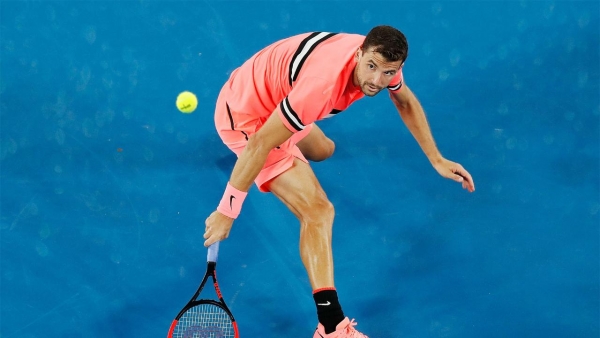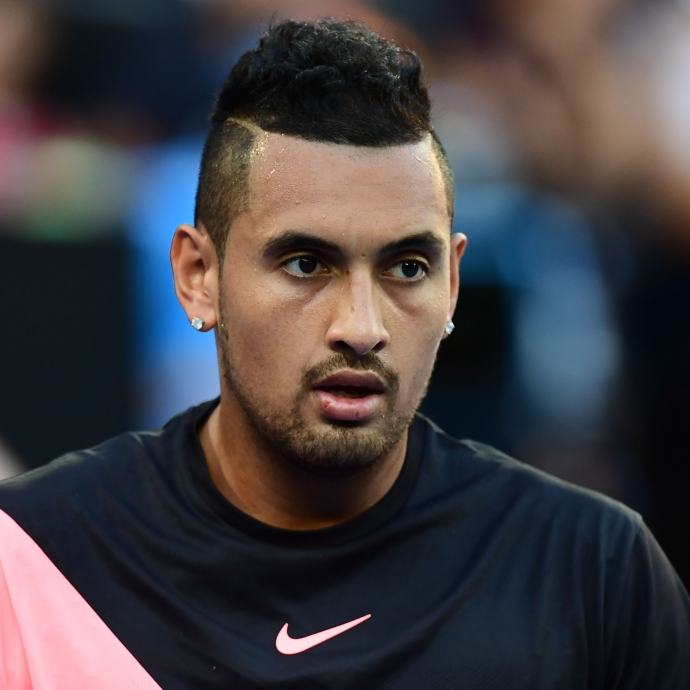Your forehand is your sword and your backhand is your shield.
At Australian Open 2018 through the first three rounds, the following breakdown clearly identifies their vastly different roles.
Winners: Forehand v Backhand
Forehands: 70% (3242)
Backhands: 30% (1369)
Ultimately, forehands are all about aggression. More raw speed. The perfect weapon to make your opponent miss.
The role of the backhand, on the other hand, is not to miss. That’s the defining role of a shield. You rely on it when under attack. Great backhands don’t miss.
Now you know this hidden layer of baseline play, you now know why Grigor Dimitrov has seriously got his work cut out for himself against Nick Kyrgios on Rod Laver Arena on Sunday night.
Dimitrov’s sword is working just fine so far in Melbourne. He has hit 52 forehand winners, (10 backhand) through the first three rounds. No problems there.
The dilemma is his shield. It’s breaking down at an alarming rate. Consider the following comparison.
Backhand error comparison (forced and unforced) through three rounds
Dimitrov = 129 errors. Average 10.8 / set
Kyrgios = 64 errors. Average 6.4 / set
Nadal = 39 errors. Average 4.3 / set
The key tactical baseline match-up will completely focus on Kyrgios being able to use his sword against Dimitrov’s underperforming shield. In Dimitrov’s past two matches, he committed 57 total backhand errors, then 52.
All of a sudden, you can really lean on Dimitrov’s backhand.
Dimitrov only had 19 backhand unforced errors in five sets against Mackenzie McDonald in the second round. Dimitrov squeaked that one out 4-6 6-2 6-4 0-6 8-6. The key stat is that McDonald was able to FORCE 38 backhand errors in that match. It’s interesting that Kyrgios also has amassed 38 forced backhand errors, but that is a three-match total - not from one.
Kyrgios also brings much better form into this match with his serve. The Australian has hit 61 aces and just seven doubles faults through the first three rounds. Dimitrov only has 28 aces, but more importantly, has committed 29 double faults. Dimitrov is one of only two players in the fourth round that has more double faults than aces. Marin Cilic has 57 aces and just five double faults, if you need the picture to get any clearer.
In many ways you could make a strong argument that Dimitrov may be the favorite for this match. After all, he is the No.3 ranked player in the world, with Kyrgios ranked 17th. The Bulgarian leads the head-to-head 2-1, but Kyrgios defeated Dimitrov 3-6 6-1 6-4 in the Brisbane semi-final just a couple of weeks ago.
Dimitrov’s form was levels better when he won the ATP Finals in London in November, winning five straight matches against top-10 opponents. His body language was flawless then. He seems more agitated now. He is less patient, and rightfully irritated with his misfiring backhand.
Based on recent form (from the past few days) Kyrgios wins this match. Dimitrov has a lot to fine-tune, and little time to get it done. Maybe deep breaths and more tolerance for errors will help. Or maybe hide the backhand with lots and lots of forehands.
This is a spicy one. Kyrgios is arguably playing the best tennis of his career, while Dimitrov clearly isn’t.
PREDICTION: Kyrgios in four sets.


